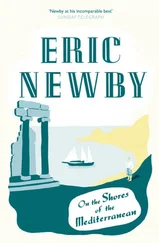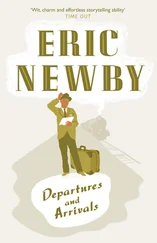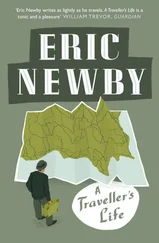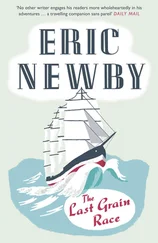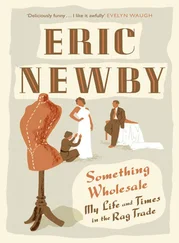‘Where is your bicycle?’ he asked.
‘In there,’ she said, indicating through open doors in a hangar what appeared to be the biggest second-hand bicycle shop in the world.
‘ Signorina ,’ he said gallantly, anxious to be rid of this Slovenian fury he had somehow unwittingly fielded, ‘if we have taken your bicycle I can only apologize on behalf of the Wehrmacht. We are not here to make war on young ladies. We will restore you a bicycle. Please take any bicycle. I will personally authorize it. Take a good bicycle.’
‘I don’t want any bicycle,’ she said. ‘I want my bicycle.’
Eventually the colonel was constrained to send for a couple of soldiers and order them to force their way through the masses of bicycles, many of them superb machines, any of which she could have had for the asking, until they reached the enclave in which Wanda’s humble machine was finally located. For with Teutonic efficiency they were grouped according to whichever town or village they had been impounded in.
Knowing all this, and that a facsimile of her old bicycle was the only thing that would really make her content, I felt myself in the same sort of spot as the German colonel at Salsamaggiore in 1943. In one of my wilder, more fanciful moments I imagined trying to sell her the idea that dropped handlebars are nothing more than raised handlebars installed upside down. And in my mind’s eye I could see her wrestling with them, like an Amazon with the antlers of a stag at bay, trying to return them to what she regarded as their proper position.
The heart of rural Dorset is not the easiest place to find out about the latest developments in the world of bicycles, but by good fortune our local newsagent in Wareham had a copy of a magazine called The Bicycle Buyer’s Bible, 1985/6 on its shelves. By this time the question of what sort of bikes we were going to take with us if we were going to get moving before Christmas was becoming extremely urgent. The Bible gave detailed specifications of about three hundred machines with prices ranging from £105 to £1147, and £1418 for a tandem.
The machines that interested me most were the mountain bicycles, otherwise ATBs, All Terrain Bicycles. Everything about a mountain bike is big, except for the frame, which is usually smaller than that of normal lightweight touring bicycles. They are built of over-size tubing and have big pedals, ideal for someone like me with huge feet; wheels with big knobbly tyres which can be inflated with four times as much air as an ordinary high-pressure tyre; very wide flat handlebars, like motorcycle handlebars, fitted with thumb-operated gear change levers; and motorcycle-type brake levers connected to cantilever brakes of the sort originally designed for tandems, which have enormous stopping power.
Most of them are fitted with 15- or 18-speed derailleur gears made up by fitting a five- or six-sprocket freewheel block on the rear hub and three chainwheels of different sizes on the main axle in the bottom bracket where the cranks are situated; a sophistication so conspicuously unnecessary that it would have had Thorsten Veblen ecstatically adding another chapter to his great work, The Theory of the Leisure Class , had he lived to see it. This equipment produces gears ranging from 20″ or even lower (which can be a godsend when climbing mountains) to 90″ or even higher for racing downhill, or with a following wind on the flat. 1 Not all these gears are practicable or even usable, however, for technical reasons.
These mountain bikes looked very ugly, very old-fashioned and very American, which was not surprising as they were the lineal descendants of the fat-tyred newspaper delivery bikes first produced by a man called Ignaz Schwinn in the United States in 1933. To me they looked even older. They made me think of Mack Sennet and Fatty Arbuckle and Jackie Coogan. If I got round to buying one I knew that I would have to wear a big flat peaked cap like Coogan’s. Eighteen gears apart – perhaps she would settle for fifteen – and providing we could find one with an open rather than a man’s diamond frame model, this seemed exactly the sort of bike, in the absence of her beloved Bianchi, that Wanda needed to carry her the length and breadth of Ireland and even up and down a holy mountain or two.
‘“To buy a mountain bike now”,’ I read, ‘“is to win yourself a place in the first of the few rather than the last of the many.”’
It was a wet Sunday evening in Dorset. We were in bed surrounded by the avalanche of catalogues and lists I had brought down on us by clipping out the coupons in The Bicycle Buyer’s Bible. One dealer, in what seemed to me an excess of optimism, had also sent order forms which read:
PLEASE SEND … MOUNTAIN BICYCLES(S), MODEL(S) … FRAME SIZE(S) … COLOUR(S) … PLEASE GIVE ALTERNATE COLOUR(S). I ENCLOSE A CHEQUE/BANKER’S ORDER, VALUE …
‘I don’t want to be one of the first of the few,’ Wanda said.
‘Shall I go on?’ I said. ‘There’s worse to follow.’
‘Okay, go on.’
‘“From prototype to production model they have been around for less than a decade. In that short time they have been blasted across the Sahara, up Kilimanjaro, down the Rockies and along the Great Wall of China.”’
‘Isn’t it true that the Great Wall of China’s got so many holes in it that you can’t even walk along it, let alone cycle along it?’
‘Yes, I know,’ I said, ‘but there is a picture here of two men sitting on their bikes on the top of Kilimanjaro. And anyway, just listen to this: “With each off-the-wall off-the-road adventure, with each unlikely test-to-destruction, the off-road-state-of-knowledge has rolled the off-road-state-of-the-art further forward.”’
‘Read it again,’ she said. ‘More slowly. It sounds like bloddy nonsense to me.’
‘There’s no need to be foul-mouthed,’ I said.
‘It was you who taught me,’ she replied.
I read it again. It still sounded like bloody nonsense and it came as no surprise when I later discovered that some of the early practitioners of this off-the-road-state-of-the-art mountain bike business hailed from Marin, that deceptively normal-looking county out beyond the Golden Gate Bridge on the way up to the big redwoods, which gives shelter to more well-heeled loonies to the square mile within its confines, all of them into everything from free association in Zen to biodegradable chain cleaning fluid, than any other comparable suburban area in the entire United States.
‘Read on,’ Wanda said.
‘“You don’t have to be some gung-ho lunatic to get your kicks”,’ I read on. ‘“Take a mountain bike along the next time the family or a group of friends head off for a picnic in the woods. There’ll be plenty of places to put the bike through its paces and it sure beats playing Frisbee after lunch [interval while I explained the nature of this, I thought outmoded, pastime to Wanda]. Or take the bike on a trip to the seaside – rock-hopping along the beach is a blast.”’
‘That’s enough,’ she said in the Balkan version of her voice. ‘I can just see you on your mountain bike, a gong-ho (what is gongho?), Frisbee-playing, rock-hopping lunatic.’
‘I say,’ I said, some time later when the lights were out, ‘I hope all this isn’t going to make you lose your enthusiasm.’
‘Enthusiasm for what?’
‘For these bikes, and Ireland and everything,’ I said, lamely.
‘Not for these bikes, I haven’t,’ she said. ‘I’ve never had any. Nor for Ireland in winter. If I come it will only be to make sure you don’t get into trobble.’
‘What sort of trouble?’
‘In Ireland all sorts of trobble,’ she said, darkly.
Читать дальше

